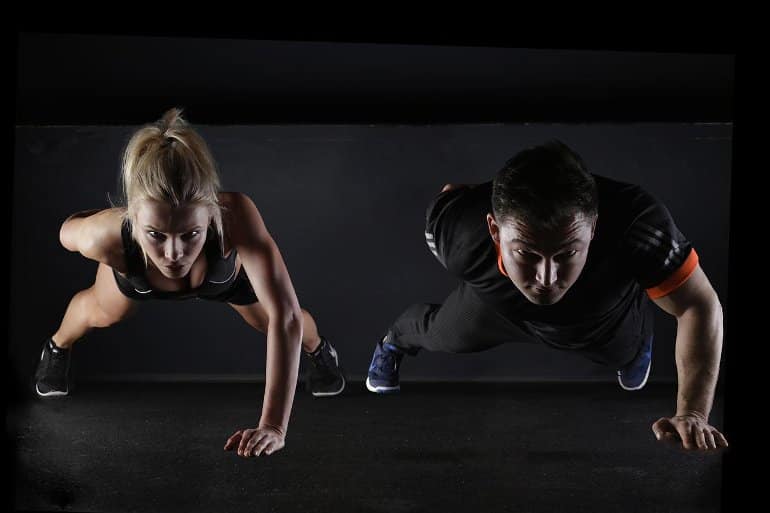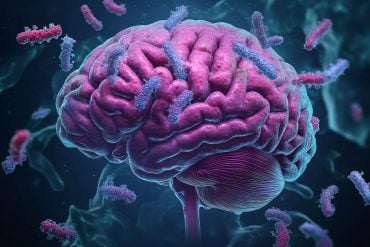Summary: Researchers identify the exertion level where aerosol particle emission increases exponentially, offering an explanation as to why exercise intensity may be linked to the transmission of infections.
Source: TUM
Before the study, it was known that the respiratory volume for untrained people increases from around 5–15 liters per minute at rest to over 100 l/min when exercising. Highly trained athletes actually reach levels of 200 l/min.
It was also known that many people have been infected with the SARS-CoV-2 virus when exercising indoors.
However, it was unclear how exercise intensity was linked to the concentration of aerosol particles in exhaled air and the actual quantity of aerosols exhaled by an individual per minute and thus on the potential risk of spreading infectious diseases such as SARS-CoV-2.
This information is urgently needed, however, for example to design mitigation measures for school gyms and other indoor sports facilities, fitness studios or discos to avoid shutdowns in case of serious waves of infection.
New methodology delivers individually measureable aerosol values
A team led by Henning Wackerhage, a Professor of Exercise Biology at the Technical University of Munich (TUM), and Prof. Christian J. Kähler, the Director of the Institute of Fluid Mechanics and Aerodynamics at the Universität der Bundeswehr München, has developed a new investigative method for studying these questions.
Their experimental apparatus initially filtered out the aerosols already present in the ambient air. In the subsequent ergometer stress test, the test subjects inhaled the purified air through a special mask covering the mouth and nose.
The exercise intensity was gradually increased from rest to the point of physical exhaustion. The mask was connected to a two-way valve through which only the exhaled air can escape. The quantity of aerosol particles emitted per minute was then measured and directly linked to the current performance of the healthy, 18-40-year-old test subjects.
Moderate aerosol emissions at medium exertion
The researchers were thus able to investigate for the first time how many aerosol particles are exhaled per minute by an individual at various levels of exercise intensity.
The result: aerosol emissions during exercise initially increased only moderately up to an average workload of around 2 watts per kilogram of body weight. Above that point, however, they rose exponentially.
That means that an individual who weighs 75 kilograms reaches that threshold at an ergometer reading of around 150 watts. This corresponds to moderate effort for a casual athlete, perhaps comparable to the exercise intensity of moderate jogging.
The aerosol emissions of well-trained athletes was significantly higher than those of untrained test subjects at maximum effort due to their much higher minute ventilation. The researchers did not find significant differences in particle emissions between genders.
Protective measures are important for high-intensity training
Although the aerosol experiments provide only indirect knowledge on the quantity of viruses in exhaled air, the study suggests useful starting points for managing indoor activities when a wave of infection combined with a poorly immunised population threatens to overwhelm the healthcare system.
“Based on our results, we distinguish between moderate endurance training with an intensity of up to 2 watts per kilogram of body weight and training at high to maximum intensity. Due to the sharp rise in aerosol emissions at high-intensity workloads above that initial benchmark, special protective measures are needed in case of a high risk of infections with serious consequences,” says study leader Prof. Wackerhage.

“Ideally, that kind of training would be moved outdoors. If that is not possible, testing should be done to ensure that no infected individuals are in the room. The participants should also maintain a proper distance and a high-efficiency ventilation system should be running.
“In addition, infection risks are reduced by training at lower intensities and keeping sessions shorter. It might also be possible for fit, young athletes to wear masks while training.”
At low workloads such as easy to moderately intense endurance training, adds Prof. Wackerhage, less protection is needed and the infection risk can be controlled through distancing and ventilation systems.
The research team is currently conducting experiments to compare aerosol emissions in strength and endurance training and to correlate them with test subjects’ ages and physical characteristics.
About this exercise and infection research news
Author: Henrike Boden
Source: TUM
Contact: Henrike Boden – TUM
Image: The image is in the public domain
Original Research: Open access.
“Aerosol particle emission increases exponentially above moderate exercise intensity resulting in superemission during maximal exercise” by Henning Wackerhage et al. PNAS
Abstract
Aerosol particle emission increases exponentially above moderate exercise intensity resulting in superemission during maximal exercise
Many airborne pathogens such as severe acute respiratory syndrome coronavirus 2 (SARS-CoV-2) are transmitted indoors via aerosol particles.
During exercise, pulmonary ventilation can increase over 10-fold, and therefore, exercisers will exhale a greater volume of aerosol-containing air. However, we currently do not know how exercise affects the concentration of aerosol particles in exhaled air and the overall emission of aerosol particles.
Consequently, we developed a method to measure in parallel the concentration of aerosol particles in expired air, pulmonary ventilation, and aerosol particle emission at rest and during a graded exercise test to exhaustion. We used this method to test eight women and eight men in a descriptive study.
We found that the aerosol particle concentration in expired air increased significantly from 56 ± 53 particles/liter at rest to 633 ± 422 particles/liter at maximal intensity. Aerosol particle emission per subject increased significantly by a factor of 132 from 580 ± 489 particles/min at rest to a super emission of 76,200 ± 48,000 particles/min during maximal exercise.
There were no sex differences in aerosol particle emission, but endurance-training subjects emitted significantly more aerosol particles during maximal exercise than untrained subjects. Overall, aerosol particle emission increased moderately up to an exercise intensity of ∼2 W/kg and exponentially thereafter.
Together, these data might partly explain superspreader events especially during high-intensity group exercise indoors and suggest that strong infection prevention measures are needed especially during exercise at an intensity that exceeds ∼2 W/kg.
Investigations of influencing factors like airway and whole-body hydration status during exercise on aerosol particle generation are needed.







